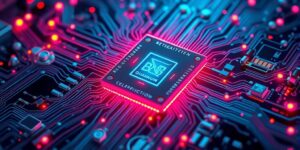How Does IoT Know So Much About Your Daily Routine?
Have you ever felt like your smart devices know you too well? Do you wonder how your morning coffee is ready just as you wake, or how targeted ads seem to follow you everywhere? The answer lies within the fascinating, and sometimes unsettling, world of the Internet of Things (IoT). This isn’t some science fiction; it’s happening right now! Let’s dive into the surprising ways your IoT devices gather information about your daily habits and preferences. We’ll uncover the methods they use and what it means for your privacy. Prepare to be both amazed and maybe a little creeped out… in a good way!
How IoT Devices Track Your Routine: A Deep Dive
IoT devices, from your smart fridge to your fitness tracker, are constantly collecting data. But how do they do it, and what does that data reveal? It’s more intricate than you might imagine! Many devices rely on sensors to gather information. These sensors can detect everything from your body temperature (in a smart watch) to ambient light levels (in your smart bulbs). This seemingly innocuous data is then aggregated and analyzed to paint a surprisingly detailed picture of your life.
Sensor Data: The Foundation of IoT Intelligence
Sensors are the workhorses of the IoT ecosystem. They’re the eyes and ears of your smart devices. Temperature sensors monitor the climate, motion sensors track movement, and proximity sensors detect when you’re near. Your smart home hub collects this data, and with clever algorithms and machine learning, your daily routine starts to emerge. It’s like having a tiny, invisible assistant constantly observing and learning.
Data Aggregation: Connecting the Dots
The data collected by individual sensors isn’t particularly insightful on its own. The real magic happens when this data is combined from multiple sources. For instance, the combination of your smart thermostat settings, your fitness tracker data, and your smart lighting schedule can reveal far more about your habits than any single data source could on its own. This is the process of data aggregation – the collection and integration of data from various sources. Think of it as a puzzle; each piece of sensor data is a fragment, but when combined, a complete picture emerges.
Machine Learning and Predictive Analytics: The Future is Now
Once the data is aggregated, machine learning algorithms take over. These algorithms analyze the data patterns to predict your future behavior. For example, based on your past routines, your smart home might preheat your oven before you even think about dinner. It’s like having a digital mind reader, anticipating your needs before you do.
Data Privacy Concerns in the Age of IoT
While the convenience of IoT is undeniable, the vast amounts of personal data collected raise significant privacy concerns. This information, if misused or accessed by malicious actors, could have serious consequences.
Protecting Your Privacy: Tips and Strategies
Data breaches are a real threat, particularly in an increasingly interconnected world. However, there are ways you can minimize the risk and take control of your data. Regularly update your device’s software to benefit from the latest security patches. Strong, unique passwords for each device are crucial. Limit unnecessary data collection by adjusting device settings. You’re not powerless in this! Understanding your IoT privacy is the first step.
Data Security Measures: IoT Manufacturers’ Role
The responsibility for data security doesn’t rest solely with individual consumers. IoT manufacturers also play a vital role. They should prioritize data security by implementing robust encryption protocols and adhering to strict data privacy regulations. Transparency is key; consumers have a right to understand how their data is being collected, used, and protected. This is the ongoing challenge of a future full of always-on, smart devices.
The Ethical Implications of IoT Data Collection
The ethical implications of constantly monitored data should not be ignored. Issues such as data bias, surveillance, and manipulation are significant considerations. Transparency and informed consent are fundamental aspects of ethical IoT development. The potential for misuse should be addressed proactively.
The Future of IoT: Balancing Convenience and Privacy
The future of IoT will likely involve a delicate balance between the convenience it offers and the need to protect individual privacy. Robust regulatory frameworks, improved data security measures, and a more informed consumer base are critical for navigating this complex landscape. By focusing on ethical data practices, we can harness the power of IoT while safeguarding our privacy.
Taking Control of Your IoT Privacy: A Call to Action
Don’t let the convenience of IoT come at the cost of your privacy! Take control by educating yourself, implementing protective measures, and demanding better data security practices from manufacturers. Your data is valuable; protect it like it is! Let’s discuss this more in the comments below.













